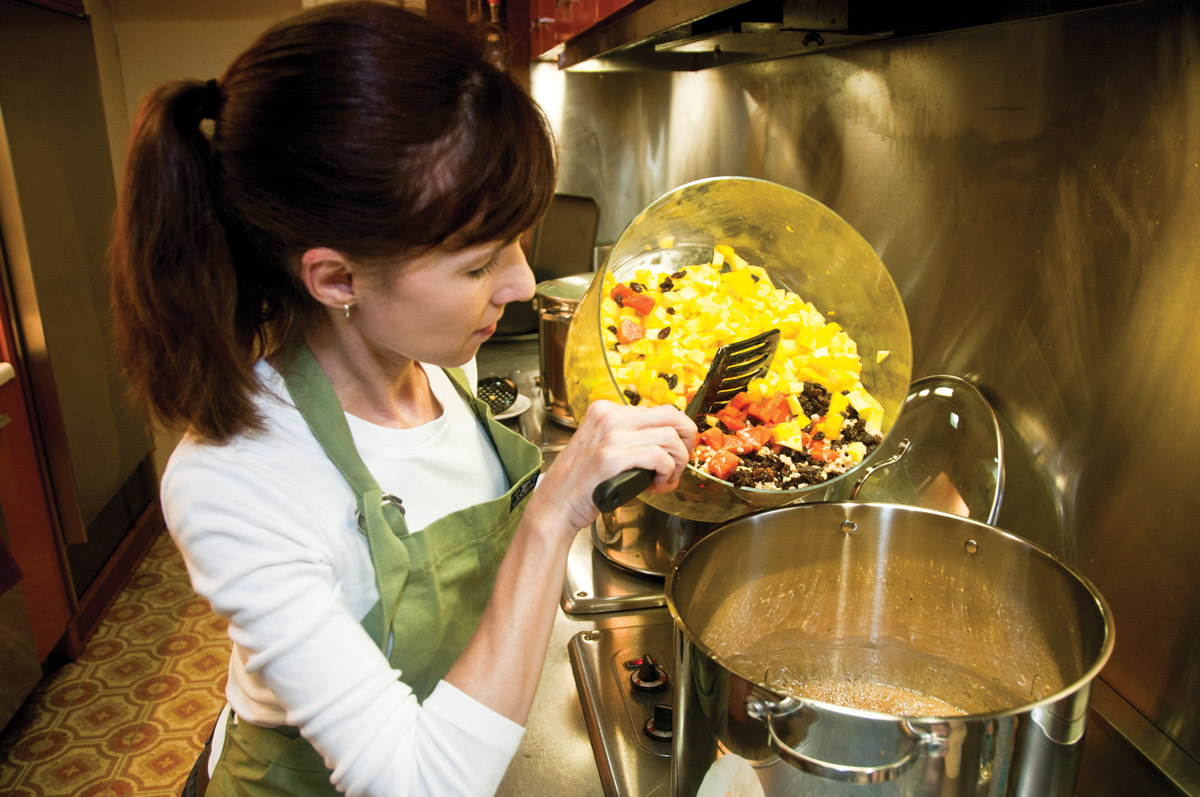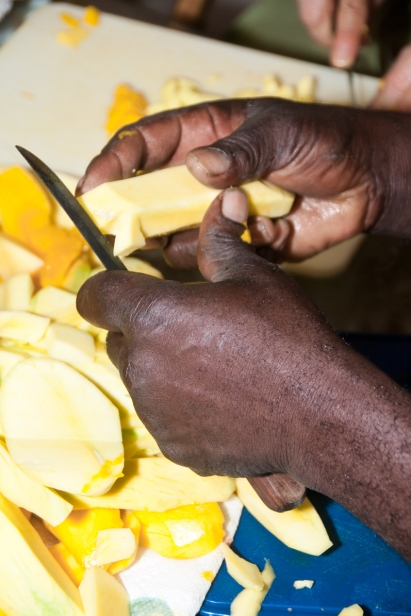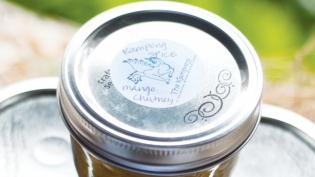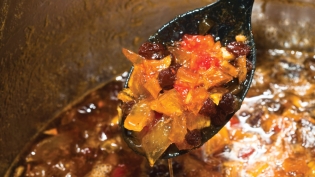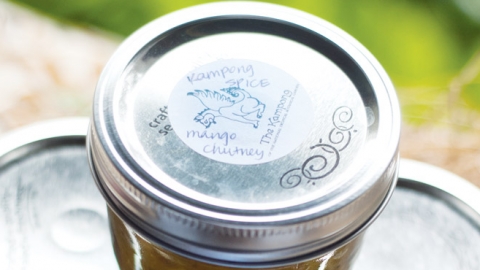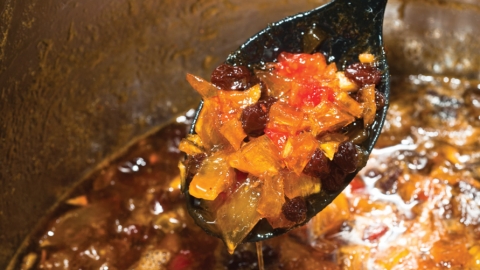A Chutney Tradition
Consider the enduring power of a gathering for a greater purpose: the quilting bee, the barn raising, the community garden. At The Kampong in Coconut Grove, the former home of legendary plant explorer David Fairchild and garden for plants he collected on his expeditions, that activity is making mango chutney. It’s an ideally suited product for the 11-acre property, home to more than 70 varieties of mangos and other exotic tropical fruits. And its creation dates back to the mid-1950s, when a trio of enterprising women decided to make and sell the chutney.
According to a Dec. 1956 story in the Palm Beach Post, during the years David Fairchild experimented with practical uses for mangos, his daughter Barbara would make up batches of green mango chutney at the Kampong kitchen. She teamed up with Faith Jackson and Barbara Bitter to form a business called Kampong, Inc., Makers of Fine Chutneys. Their green mango chutney featured a “true East Indian blend of rare and exotic fruits: mangos, papayas, gingers, tamarinds and spices. A delectable condiment to serve with all curry and rice dishes, steak, meats, fish, in sauces or with cheese for canapés.” The first mangos they used were Sandeshas from the trees at the Kampong, and they developed two styles: Manisan, a mild and sweet blend; and Sambalan, a hot and tangy version. They sold the chutneys to stores and by mail order, and expanded the line to include a hot Mango Sambal; guava lime chutney; and an English tomato chutney.
Handed down
The operation closed down when one of the principals moved, but the trademark was bought by Dr. Catherine (Kay) Sweeney when she and her husband, Edward, bought The Kampong in 1963. Not only did Dr. Sweeney preserve Fairchild’s unique plant collections, she continued the annual tradition of making chutney. The tags on her Kampong Mango Chutney pick up the story: “Every year Kay Sweeney made over 100 jars of mango chutney to send to her friends for Christmas. Semi-ripe mangos were picked in the summer, peeled, chopped and frozen until Kay returned in October from her worldwide travels. The chutney was made before Thanksgiving and mailed the first week of December. Bernice Russell, Kay’s longtime Jamaican housekeeper, began making the chutney from fresh green mangos. The original recipe gradually evolved from a delicious spicy blend made from frozen semi-ripe mango to a hot and spicy version made from fresh green mango. By Christmas the spices and other ingredients melded into a flavorful concoction.”
Even after Dr. Sweeney donated The Kampong in the 1980s to what would become the National Tropical Botanic Garden, the chutney-making tradition continued. Today, staff and volunteers gather to chop fruits and prepare ingredients to cook in shiny stockpots in The Kampong’s kitchen. The recipe used today remains a closely guarded secret. Jars of the coveted chutney are given to aficionados and supporters at various events during the year. It’s a legacy that both preserves the past, and bonds old and new faces over the comforting conversations that take place when food is being prepared.
The Kampong mango chutney recipes use ripe and green mango, papaya and other spices. This Spicy Mango Chutney recipe, left, uses green and ripe mangos.


